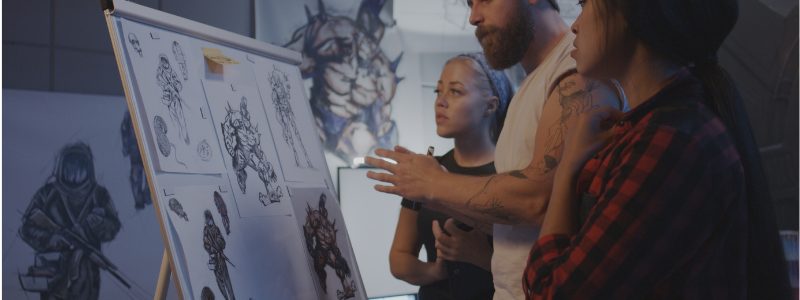Digital Art Styles for Games
The development of digital games is much easier today than a few years ago. The arrival of powerful and free Game Engines for beginners has greatly increased the market for independent games.
A single person is able to develop an entire game on his own if he wants, just having some specific knowledge. That’s because today’s engines allow you to buy items made by others so that you can use them in your games.
The games are developed with 2D and 3D art. 2D art comes from the origins of digital games and reflects a style like cartoon flat on the screen.
The 2D style can reflect the styles of the old games through the Pixel Art technique where the characters and environments are drawn on the screen with low resolution, just like in the old games. There are also games with visuals very close to the TV cartoons.
The 3D style is characterized by representing the games through polygons drawn on the screen with resources that give us the real sensation of images in three dimensions.
Shadow, transparency, lighting and relief effects, for example, help reinforce this feeling.
Following the 2D line, 3D games also have a style that goes back to the old games known as low poly. This style is characterized by representing the characters and scenarios with little polygons also to the old game styles.
The technological evolution of hardware has made it possible for computers and consoles to display increasingly better and more realistic images.
Tips for choosing a style
The art style of a game should reflect the emotion you want to spend with it, but for independent games, naturally, the style depends on the investment that will be needed to build it.
Investment in this case is not only financial, but also and mainly of your time to develop and the skills you have and also your personal taste.
When starting development it is important to keep in mind that art cannot become an impediment to the completion of the game, like all others. Another relevant factor is the market.
Despite the personal taste, the game must be developed to please the public and not just the developer. There are advantages and disadvantages between choosing the 2D or 3D style that must also be taken into account.
Types of Art
Unlike art style, the type of art has to do with the function that art plays within the game. The big studios usually divide this art among the artists according to the characteristics below.
In this context, the presence of the figure of the art director who is responsible for maintaining the overall harmony of the project is super important.
Concept Art
Concept art is the first art to be developed for building a game. It is through it that game designers are able to expose their initial ideas and the relationship between design and visuals to the team.
Based on the views of the game designer, the artist develops concepts of characters, scenarios and objects that make up the environment and give personality to the game. Most of the time concept artists are specialized in creating art concepts and developing the art itself for the types to follow.
Environment Art
From the concept work and the game designer definitions, the environment artist who will create the scenarios or stages where the game takes place comes into play.
It is important that this artist has a good notion of game design in order to fully understand the ideas and challenges that the game designer wants to pose to players.
Character Artist
The character artist, as the name suggests, is responsible for developing the characters in the game. He must follow the guidelines of the game designer, creating characters that fit the history of the game, if any, and that have personalities easily detectable by the player.
Where to Find Game Artists
There are several ways to find artists for games, the game artists. It all depends on the style of art you chose for your game and also on the budget for spending on art.
Generally speaking, artists can be found easily in communities on social media or on websites specializing in portfolios for artists. Freelance job sites like 99Freelas, Frelancer.com and others have grown a lot in recent years and are also a great option.
It is important that you have already defined the art style and that the artist has an affinity for that style. This way it is much easier to pass references very close to what you want and that the artist is already used to developing.
This also speeds up the delivery process.
